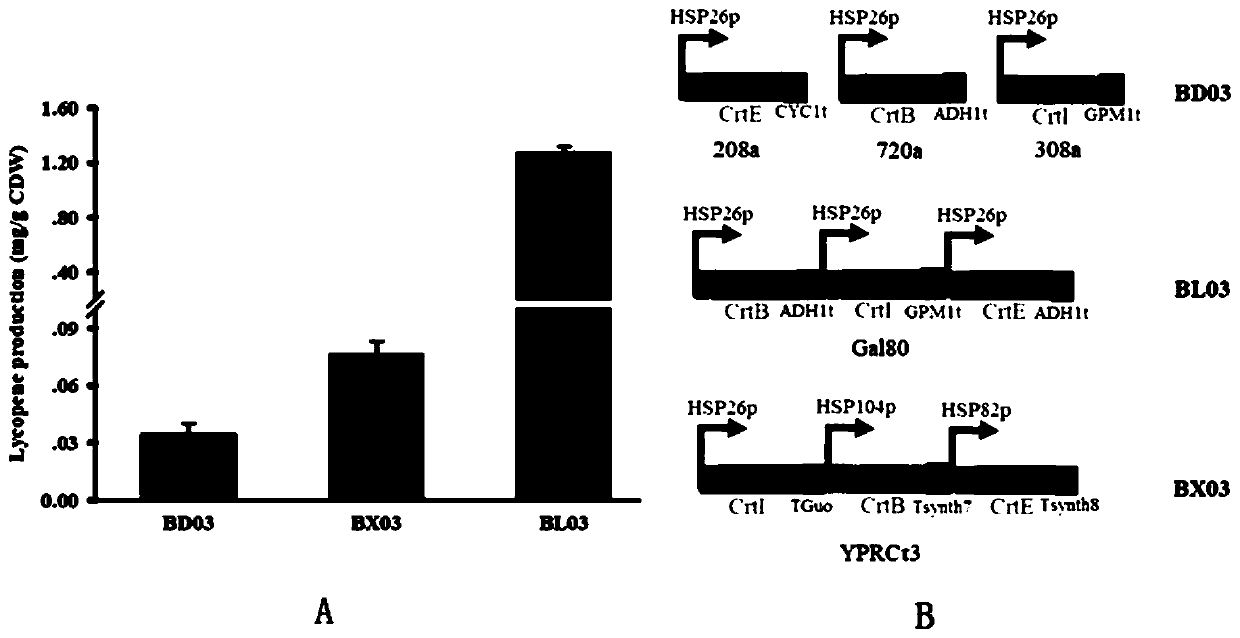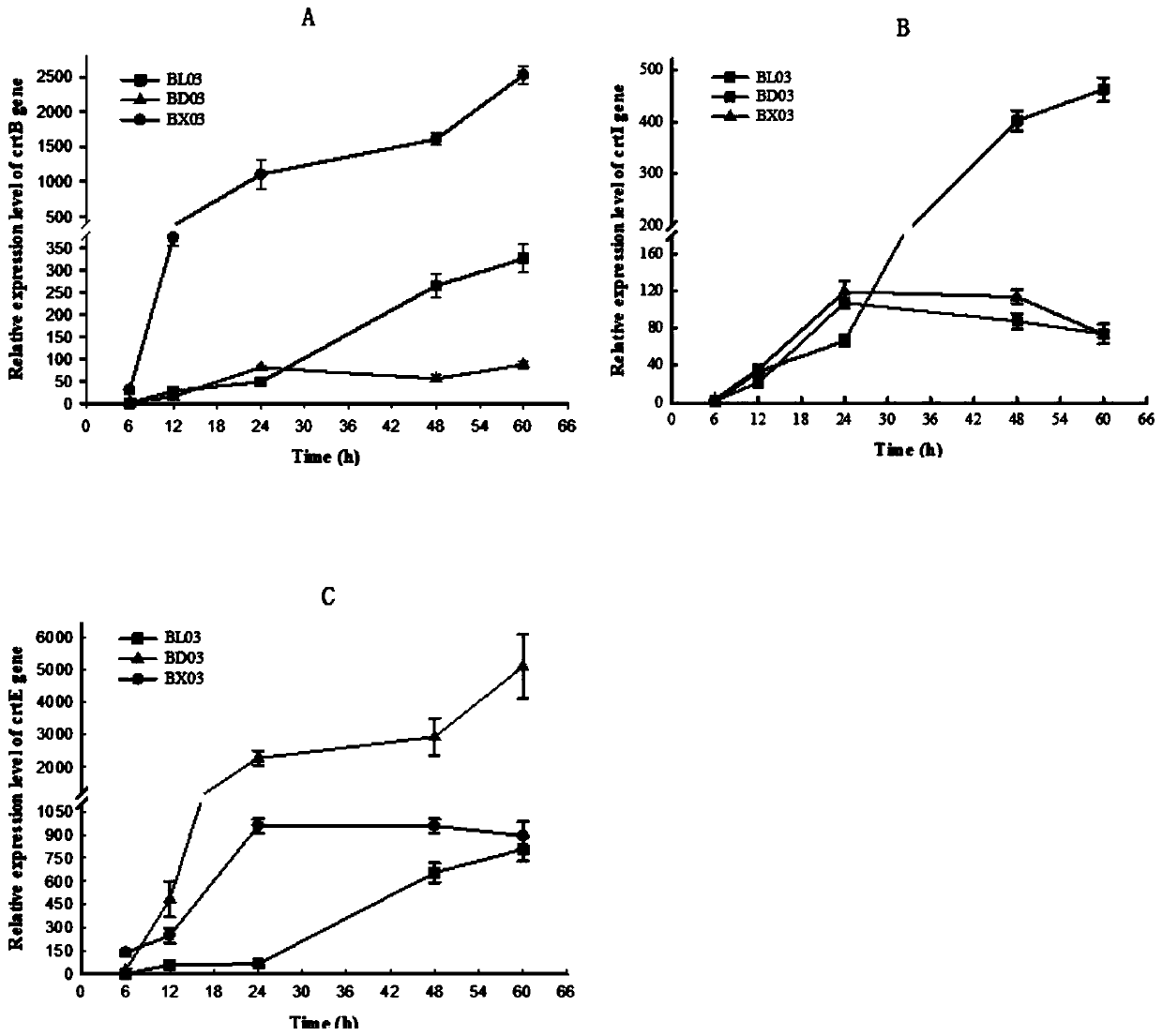Recombinant yeast strain and application thereof
A technology for yeast and Saccharomyces cerevisiae, which is applied in the field of genetic engineering, can solve the problems of increasing energy consumption and producing production costs, and achieves the effects of increasing costs, simple operation and easy control.
- Summary
- Abstract
- Description
- Claims
- Application Information
AI Technical Summary
Problems solved by technology
Method used
Image
Examples
Embodiment 1
[0023] Example 1 Construction of Gene Editing System
[0024] In order to facilitate the genetic manipulation of Saccharomyces cerevisiae, the present invention first constructed pHCas9M-gRNA based on the pHCas9-Nours plasmid (Molecular Cloud Cat. No.: MC_0000293) and the pYES2-gRNA-hyg-MCS plasmid (Molecular Cloud Cat. No.: MC_0000294) Plasmid (Cat. No.: MC_0000739). The plasmid contains an HCas9 module, a gRNA expression module, and a G418 module. Specifically, the HCas9 fragment is amplified with primers HCas920170518-F / HCas920170518-R, the G418 fragment is amplified with primers G41820170518-F / G41820170518-R, and the G418 fragment is amplified with primer 2μ20170518 -F / 2μ20170518-R was amplified to obtain a 2μ fragment, and the primer Amp20170518-F / Amp20170518-R was used to amplify the Amp fragment, and then the above fragment was ligated using a recombination kit (ClonExpress MultiS One Step Cloning Kit) to construct pHCas9M-gRNA Plasmid, the pHCas9M-gRNA plasmid such as...
Embodiment 2
[0027] The construction of embodiment 2 growth coupling dynamic regulation bacterial strain
[0028]According to the genome data of Deinococcus gobi, the lycopene synthesis genes crtE, crtB and crtI were synthesized through codon optimization. The nucleotide sequence of the gene crtE is shown in SEQ ID NO.1; the nucleotide sequence of the crtB is shown in SEQ ID NO.2; the nucleotide sequence of the gene crtI is shown in SEQ ID Shown in NO.3. In order to obtain a better expression form, the present invention has carried out the construction of three bacterial strains. 1) Place the crtE, crtB and crtI genes under the HSP26 promoter, and integrate them into the 208a, 720a and 308a sites of the S. and under the HSP82 promoter, integrated into the YPRCt3 site of the Saccharomyces cerevisiae genome in a tandem manner to construct strain BX03. 3) Place the crtB, crtI and crtE genes under the HSP26 promoter and integrate them into the gal80 of the Saccharomyces cerevisiae genome in ...
Embodiment 3
[0048] The dynamic control of embodiment 3 rate-limiting steps
[0049] The HMG1 gene of Saccharomyces cerevisiae is considered to be the rate-limiting step of the entire MVA pathway, because there is a transmembrane region in front of the HMG1 gene, which is subject to strict metabolic regulation. In order to overcome this problem, the present invention overexpresses HMGR derived from myxobacteria, which has the same function as HMG1, but it has no regulatory region. HMGR (OhmgR) was synthesized from the whole gene through codon optimization, and the nucleotide sequence of the HMGR gene is shown in SEQ ID NO.4. In order to obtain a better control mode, the present invention selects Cit 1 , HSP26 and HSP104 promoters were screened and found that Cit 1 The promoter effect is the best, which can reach 2 times of the HSP104 promoter, and their transcriptional characteristics were determined.
[0050] Specifically, based on the BL03 strain constructed in Example 2, use primers ...
PUM
 Login to View More
Login to View More Abstract
Description
Claims
Application Information
 Login to View More
Login to View More - R&D
- Intellectual Property
- Life Sciences
- Materials
- Tech Scout
- Unparalleled Data Quality
- Higher Quality Content
- 60% Fewer Hallucinations
Browse by: Latest US Patents, China's latest patents, Technical Efficacy Thesaurus, Application Domain, Technology Topic, Popular Technical Reports.
© 2025 PatSnap. All rights reserved.Legal|Privacy policy|Modern Slavery Act Transparency Statement|Sitemap|About US| Contact US: help@patsnap.com



